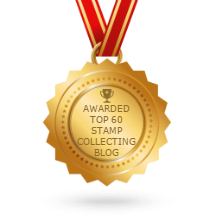Date of Issue : 2 March 2015
Here is a unique stamp with special effects to be released by Liechtenstein Post today. This special stamp, being released on the 2nd of March is to celebrate the International Year of the Light.
Sunlight is the foundation of life for humans, animals and plants. Light in general is also a key subject of science and culture. The United Nations proclaimed 2015 as the International Year of Light: 1000 years ago it was proven for the first time that light sources emit light rays, exactly 200 years ago the wave character of light was discovered and the quantum theory of light is 110 years old.
Experimenting with light arouses scientific curiosity. The special stamp “Play of Light” (value: CHF 1.90) permits the observer to conduct three experiments relating to the anniversaries mentioned. The background of the stamp glows in the dark owing to its fluorescent colour. It turns into a source of light if it was exposed to sunlight beforehand.
The wave theory can be observed if the stamp is held up to a source of light. The micro-perforations in the paper become easily visible as the light waves are diffracted through the small openings. For the experiment on quantum theory, the light pink colour behind the ball was printed with a special colour. When irradiated with UV light, the colour turns from pink to violet.
Europa 2015 stamps from Liechtenstein
Date of Issue : 2 March 2015
Another set of stamps to be released on 2nd March features Europa 2015 . Toys are the theme of this year’s Europe stamps issued by the member states of the trade association representing European public postal operators, PostEurop. The Liechtenstein issue comprises two special stamps showing figurines produced in Liechtenstein in the 1940s, a “Polar Bear” (value: CHF 1.40) and a “Goat” (value: CHF 1.40).
The artistic realisation focuses on the actual purpose of the figurines – playing – so the pictures look like snapshots of childlike playing scenes: The polar bear is enjoying the climate in the freezer compartment of a refrigerator and the goat is proudly climbing a lemon. The toy factory in Schaan at that time made nativity figurines and other animal figures for several years. A kind of modelling material was developed in advance on the basis of kieselguhr in protracted tests. This was pressed into metal moulds and painted by hand after hardening. The figurines found a ready market worldwide. In 1949, one of the company’s founders left the company. Under the name Spiwa, his partner merged with another company in the business and continued to make toys for some years afterwards.




































No comments:
Post a Comment